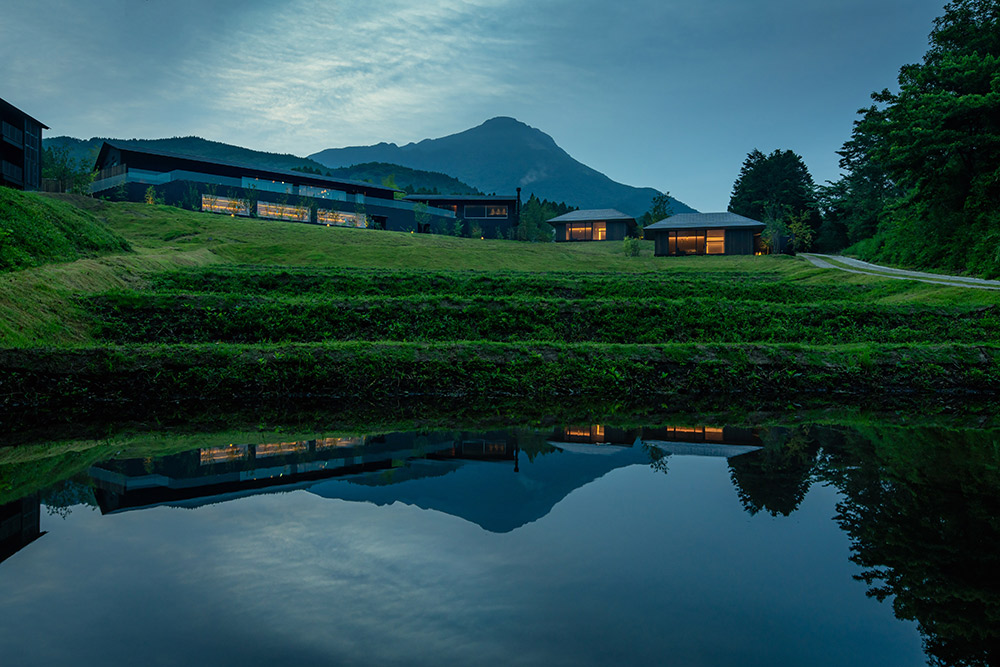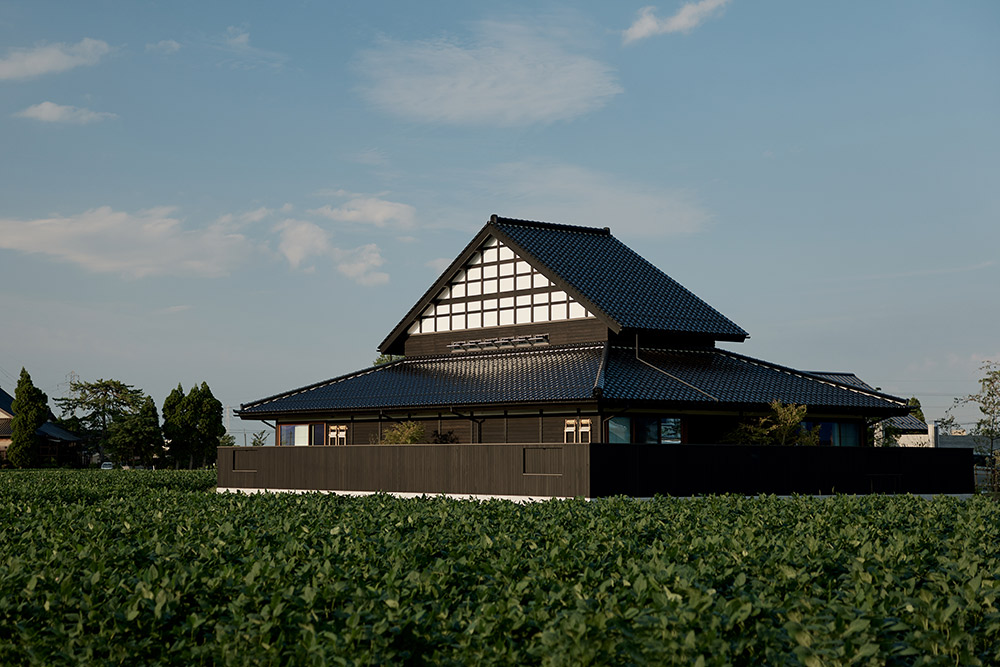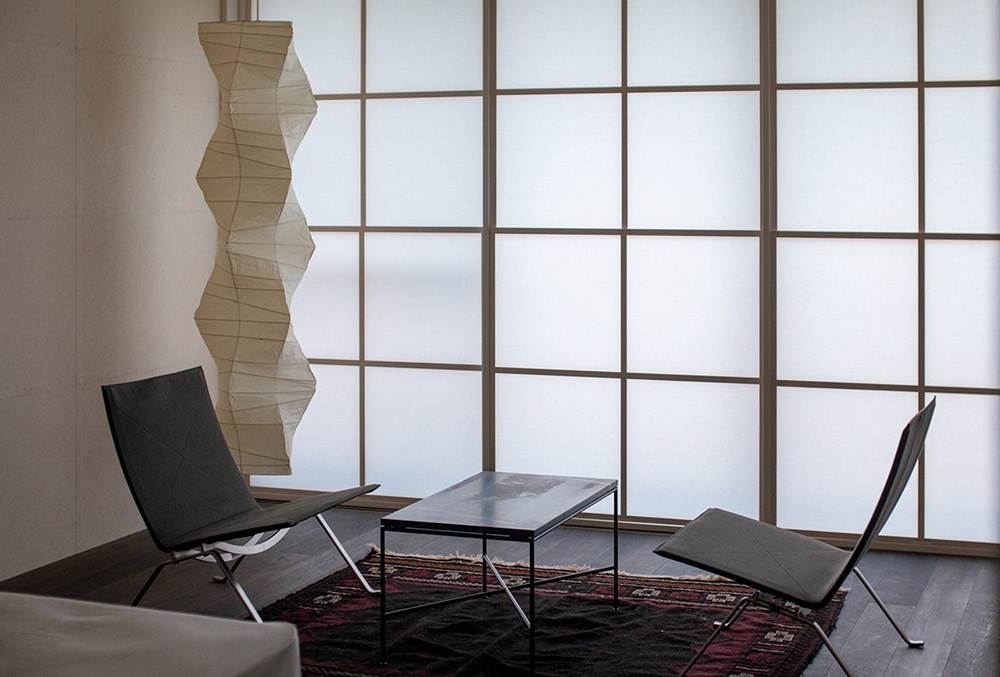Last October, Japan reopened its borders to foreign travelers. For two and a half years, the country had implemented some of the world’s strictest COVID-19 entry controls, at first closing their borders almost completely to foreign visitors, and then only permitting entry to those visiting with tour groups. For a country whose tourism industry is typically massive, with a legion of cutting-edge, architecturally brilliant hotels stretching from Hokkaido to Kagoshima, this closing-off from the world was an unprecedented blow—one that caused destinations across the East Asian archipelago to radically restructure their dayto-day operations. Now, these hotels are once again eager to receive foreign visitors. Here are three serene, unique, luxury-forward destinations across Japan that are worth exploring outside the capital for—and what they’re doing to adjust to the new influx of visitors.

Sowaka is located in the Gion district of Kyoto, a neighbourhood famous for its geishas and its historical super-narrow wooden shops. The hotel blends elegantly into the surroundings with its ryokan appearance—a type of traditional Japanese inn that’s existed for over a thousand years. Its two buildings, linked together by an inner courtyard, are rustic and serene, flush with dark woods and quaint eaves that emanate a calming residential feel. The secondary building is more contemporary, with minimalist décor and clean lines, but it’s the main building—Sowaka’s modern interpretation of the open-air, tatami-matted ryokan—that really shines. Where possible, the architects have preserved the structure and woodwork of the original building, updating it in ways inspired by traditional Japanese craftsmanship. “We avoided contrasting the old and new, and instead tried to harmonize them” says architect Shigenori Uoya. There are alcoves with hanging scrolls and flower arrangements, shoji windows of translucent papery screens, and slick, timeless furniture: stylish platform beds, low-profile lounge chairs. Wide windows look out onto the inner courtyard, where moss, grass, vegetation, and stones have been organized with an intentional fullness.

Sowaka first opened back at the end of 2018, but with the reopening of Japan’s borders at the end of last year, it’s like they’ve had to launch the hotel all over again. “The pandemic hit the Japanese tourism industry hard, and our hotel was no exception. Inbound traffic was almost non-existent,” says Sowaka. They focused on domestic travellers during the lull period, but now international guests are returning in full force, radically altering the pace of the hotel’s operations. The hotel’s key to attracting visitors again has been to orient everything they do towards “the true omotenashi spirit,” says Sowaka—an expression of Japanese hospitality culture that connotes wholehearted care as well as mindfulness.

Far west of Kyoto, in Southern Japan’s Oita Prefecture, sits KAI Yufuin—a hot spring hotel situated among cascading rice field terraces before Mount Yufu, an active volcano. The terraces are central to the tranquil, mindful atmosphere of the hotel; through observing the natural beauty of the fields, the ‘seasons’ rhythm can be felt, emotionally moving visitors and letting them feel the sheer beauty of nature,” says the team at KAI Yufuin. Despite the hotel’s humble origins, architect Kengo Kuma believes that the rice field terraces will bring visitors “greater satisfaction than Japanese gardens.”

There are two types of accommodations scattered under the shadow of the mountain: four quaint villas stand solemnly on the rice terraces, while the main building faces the treeline of sawtooth oaks. The buildings were oriented so that the rich, varied nature of the site could be felt from different directions: the north side has the forest, the south the misty valley, the east the mountain, and the west the terraces. With their low eaves and dark exteriors, the structures are built to complement and blend into the surroundings, drawing attention towards the striking beauty of nature. The most impressive aspect of the site is the main building’s private outdoor hot spring bath, subtly outfitted with black wood-grain panel ceilings and black pebble walls and floors.
During the years that Japan’s borders were closed, KAI Yufuin pivoted to focusing on local demand: “microtourism was great, balancing support of the local economies with not spreading the virus.” They took the opportunity to encourage local people to fall in love with the characteristics of the area, a perfect tactic for their nature-focused destination. When the country reopened to tourists in October, Hoshino Resorts, the company that oversees KAI Yufuin, began to offer free medical insurance for international travellers throughout all their properties—an especially appealing bonus for visitors when the risk of contracting COVID still lingers.

Rakudo-An lies in Central Japan’s Toyama Prefecture, an area defined by the dispersed settlement patterns of the people living there, where buildings are scattered distantly amid wide-open expanses of lush green fields and the mountain line looms beautifully in the distance. The deep countryside might be an odd location for a luxury hotel, but Rakudo-An believes in the beauty and deep-seated dignity of the area. In the design and ethos of the hotel, they emphasize and channel dotoku—a Japanese concept referring to the richness and value that’s created when humans live and work in harmony with nature. The hotel is located in a previously abandoned century old farmhouse. The architects at design agency 51% Gowari Ichibu restored it using traditional construction methods handed down over generations combined with natural, local materials—soil, clay, bamboo, wood, silk, and Japanese washi paper—that “ensure a seamless connection between the building and the surrounding natural landscape,” says Rakudo-An. Inside is a medley of the contemporary and traditional, local and global: traditional local folk crafts are displayed next to Scandinavian furniture, and rustic dark wood-panelled spaces give way to cream-coloured minimalist bedrooms.

The hotel first opened in October, and in a post-pandemic world, the sequestered location of this hidden gem might be wellpositioned to meet the new needs and desires of travellers. Rakudo-An is also committed to a more sustainable style of tourism they call “regenerative tourism,” in which income is used to preserve and revitalize the local community. Currently, initiatives include directing 2 per cent of accommodation fees towards conservation, using local agriculture in the hotel’s restaurant, and providing guests with programs that let them experience and learn about the value of the local lifestyle. Like Sowaka and KAI Yufuin, Rakudo-An seeks to let travellers know that a stay in a downtown Tokyo hotel remains desirable, but for travellers seeking to return to Japan following its reopening, there are other beautiful, serene locations to explore that accentuate the country’s renowned landscapes and culture.

